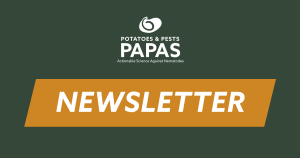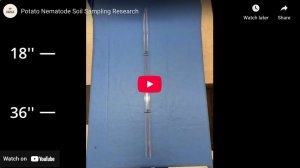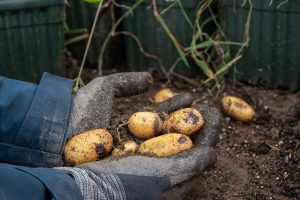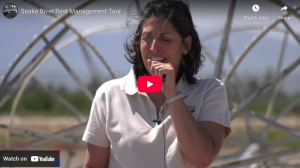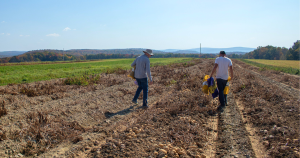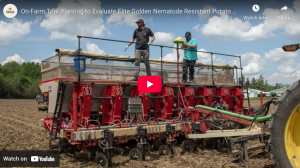Selecting for Success: The Battle with Potato Virus Y
Potato Virus Y (PVY) is a potato pathogen that can cause up to 80% yield loss. These losses are not only observed in commercial and seed operations, but in breeding programs as well.
PVY is transmitted by aphids. To reduce PVY risk, the Cornell potato breeding fields are strategically located on top of Mount Pleasant, where the cooler weather means that aphids colonize weeks later than they do in the valleys below. The program also takes steps to remove symptomatic plants from plots during the growing season – staff walk the fields weekly, looking for infected plants. Given the variability of PVY symptoms among clones, field technicians use test strips – like COVID tests where two bands indicate the presence of the virus – to confirm infections. One of the main sources of virus inoculum is infected seed. To keep inoculum levels as low as possible, samples of elite clones are grown out over the winter in a greenhouse and tested for PVY. If too much PVY is observed, the clone will be discarded.
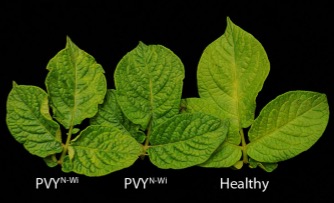
It is normal to lose a few clones to PVY each year. However, in the 2023 growing season, the Cornell program lost approximately 75% of its germplasm to PVY. The exact cause of this severe outbreak remains uncertain, but favorable environmental conditions could have played a role.
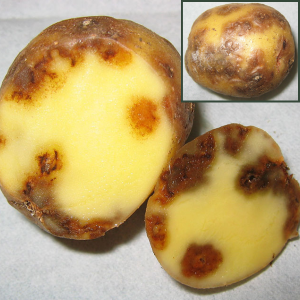
Although the outbreak wasn’t planned, it has helped us select for resistance since clones with PVY resistance genes are more likely to survive. Nevertheless, the loss of the germplasm makes it more challenging to develop a potato cyst nematode (PCN) resistant cultivar, because it is more difficult to develop a cultivar that is resistant to both PVY and PCN than to develop a cultivar resistant to one of these alone.
Moving forward, the program intends to prioritize crosses where at least one parent is resistant to PVY, to stem further spread and get PVY under better control.
Article by Pia Spychalla

